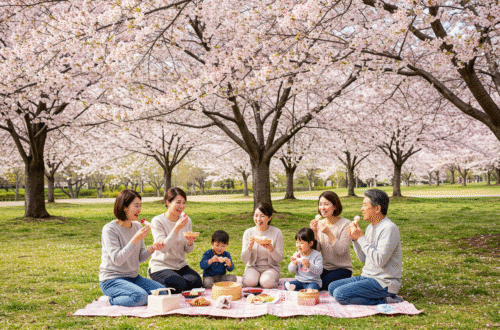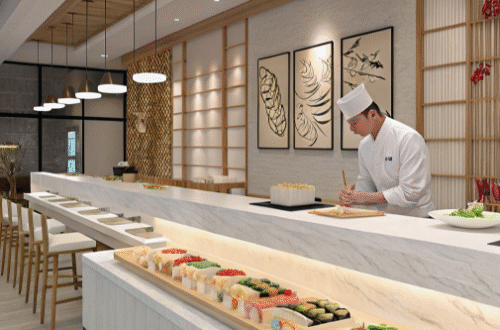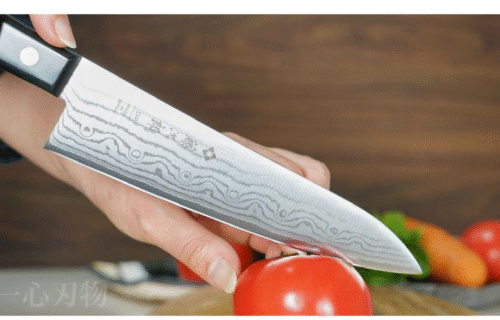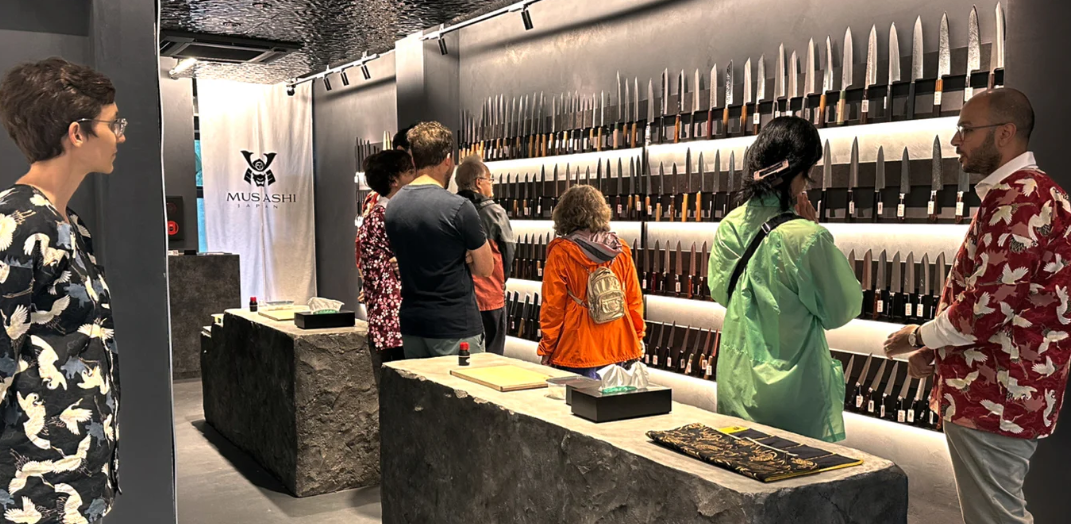
05-01-5. Your First Wabocho: A Buyer’s Guide for Aspiring Chefs & Enthusiasts
We have delved deeply into the rich history of Japanese knives, their diverse types, the craftsmanship that goes into their manufacture, and the importance of daily maintenance. By now, you must surely understand that Japanese knives are not merely kitchen tools, but works of art that embody the soul of Japanese culinary culture.
In this chapter, we will provide a practical purchasing guide to help you find your own **”My Wabocho”**. For aspiring chefs and enthusiasts who wish to experience the charm of Japanese knives and elevate their cooking to the next level, choosing your first Japanese knife can be both exciting and overwhelming, leaving you unsure where to begin.
We will address your questions about where to purchase, how to select the perfect knife from the many available options, and how to assess its value relative to its quality. We aim to support you in finding the best Japanese knife for your needs. Make a wise choice and enrich your culinary journey.
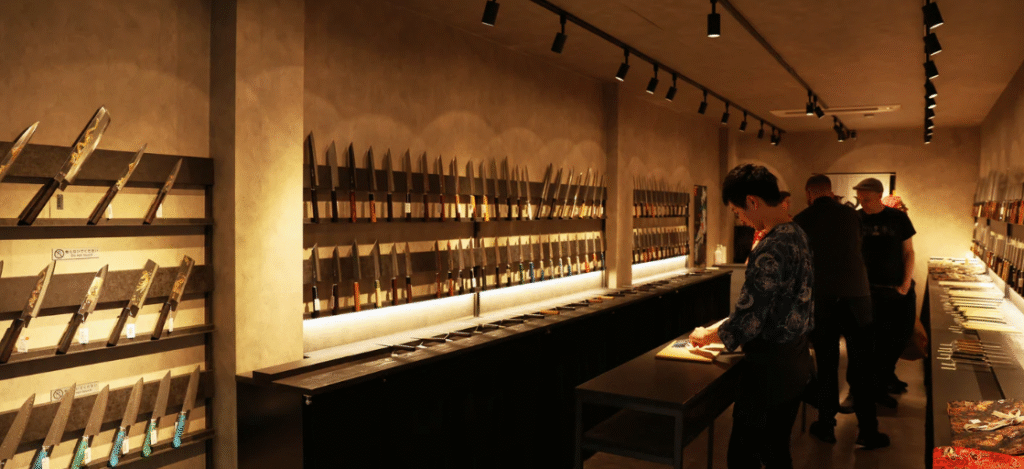
5.1 Where to Buy: Reputable Japanese Knife Shops & Online Resources
Japanese knives vary greatly in quality and price range, so where you buy them is a very important consideration. By choosing a reliable retailer, you can avoid counterfeit or low-quality products and find a knife that you can use and enjoy for many years to come.
Physical Stores in Japan: Experience and Expertise
If you have the opportunity to visit Japan, we highly recommend visiting a store in person and selecting a knife while consulting with an expert. Being able to hold the knife in your hand and check its weight, balance, and grip is a major advantage that cannot be obtained through online purchases.
- 1. Tokyo: Kappabashi Kitchen Town
- Features: Located near Asakusa, Kappabashi Kitchen Town is a specialized wholesale district where you can find all kinds of “food tools.” This street is lined with dozens of knife specialty stores, offering a wide variety of Japanese knives.
- Recommended Points:
- Unparalleled Selection: You can see a wide range of knives, from affordable options for beginners to high-end models used by professionals, covering various price ranges and types.
- Expert Advice: Many stores have staff with specialized knowledge of knives who can provide personalized advice to help you find the perfect knife based on your needs (cooking level, frequency of use, budget, desired sharpness, etc.). An increasing number of stores also have staff who can communicate in English.
- Trial experience: Some stores allow you to test the knives by cutting actual ingredients, allowing you to feel the sharpness and usability firsthand.
- Sharpening and engraving services: Some stores offer sharpening services on-site or engraving services where they can engrave your name on the knife. This is a special experience to obtain your very own “My Wabocho.”
- Representative Stores: Kamaasa Shouten, Tsubaya, Yoshida Hamono, etc.
- Tower Knives – Osaka & Tokyo Knife Specialty Store
- MUSASHI Japan
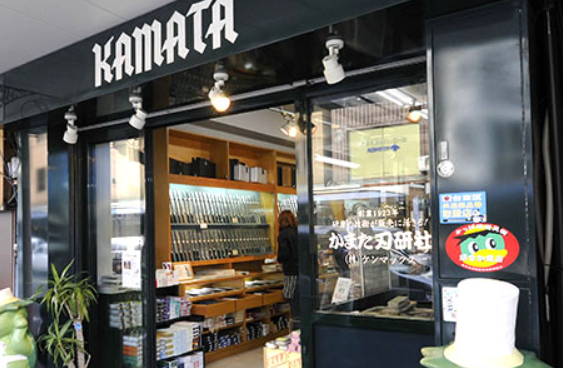
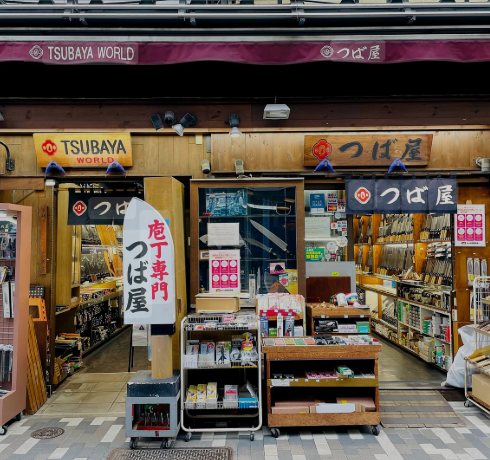
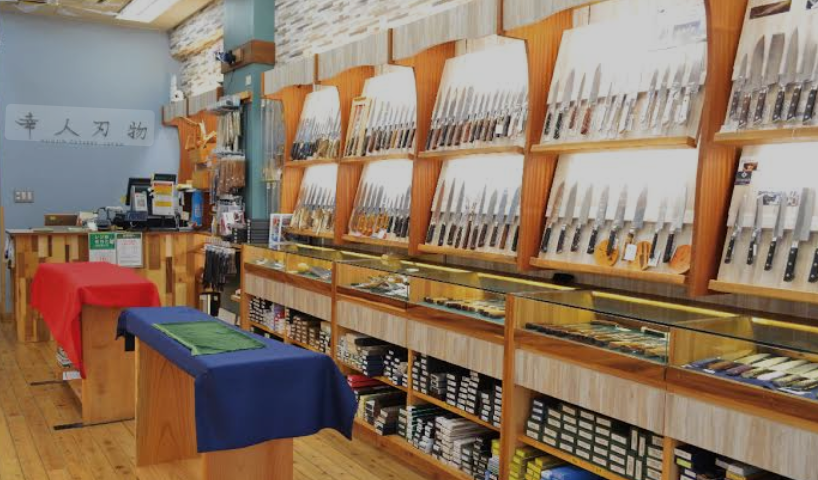
- Osaka: Sakai City (Sakai City, Osaka)
- Features: Sakai City is one of Japan’s leading producers of Japanese knives, with a history of about 600 years. The quality of Sakai knives is highly regarded worldwide, with 90% of professional chefs said to use Sakai knives.
- Recommended points:
- Authentic craftsmanship: Many traditional blacksmiths and sharpeners still live in Sakai, and some of them have stores where they manufacture and sell their products directly. You can experience authentic craftsmanship.
- Tours and Experiences: Some workshops offer tours where you can observe the forging and sharpening processes, or participate in simple hands-on experiences. This allows you to gain a deeper understanding of the background behind the creation of Japanese knives.
- Representative stores/workshops: Sakai Traditional Cutlery Craft Museum, numerous artisan-run stores.
- SAKAI DENSHOKAN
- ower Knives – Osaka & Tokyo Knife Specialty Store
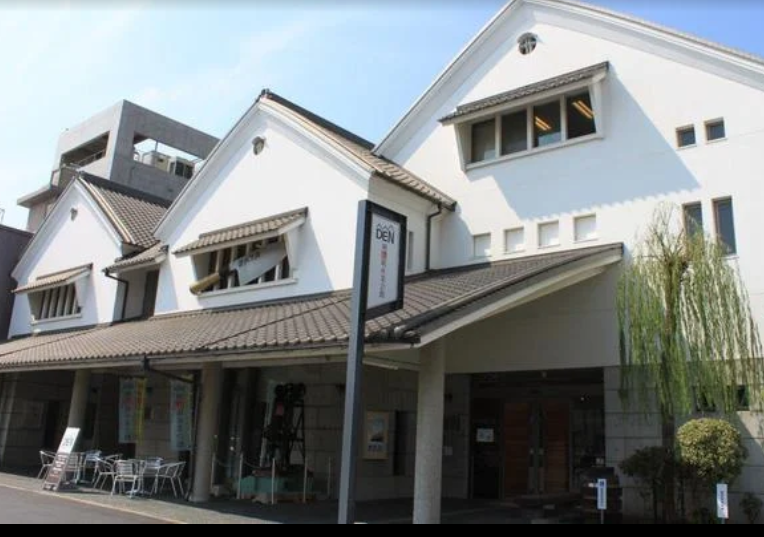
- 3. Fukui: Echizen City
- Features: Echizen cutlery is a traditional craft with a history of over 700 years. It is particularly known for its forging techniques and durable, sharp knives.
- Recommended points:
- High quality and design: While preserving tradition, many Japanese knives incorporate modern designs and are popular with a wide range of people.
- Workshop Tours: Opportunities to observe the manufacturing process by craftsmen are available at the Echizen Forged Blades Cooperative Association and other organizations.
- 4. Department Store Kitchenware Sections:
- Features: Major Japanese department stores (Isetan, Mitsukoshi, Takashimaya, Hankyu, etc.) carry famous brands of Japanese knives in their kitchenware sections.
- Recommended Points:
- Peace of Mind: Department stores offer a sense of security, with strict quality control measures in place.
- Attentive Service: Knowledgeable staff are available to provide detailed consultations.
- Comparison Shopping: You can compare knives from various manufacturers all in one place.
Online Resources: Accessible from Anywhere in the World
Even if it is difficult to visit Japan, there are many online resources where you can purchase high-quality Japanese knives from around the world.
- 1. Official Online Stores of Manufacturers/Brands:
- Advantages: These are the most reliable sources, allowing you to purchase authentic products directly. They often provide detailed product information, manufacturing philosophies, and maintenance methods. Some manufacturers have English-language websites.
- Example: Global Knife Japan Official Store (some Japanese knife brands also have an online presence)
- 2. Specialized Online Knife Retailers:
- Advantages: You can view knives from multiple Japanese manufacturers in one place, making it easier to compare and choose. Many offer international shipping and have robust English-language customer support.
- Example: Knifewear (Canada-based, specializing in Japanese knives), Japanese Knife Imports (U.S.-based), Chef Knives To Go (U.S.-based), etc.
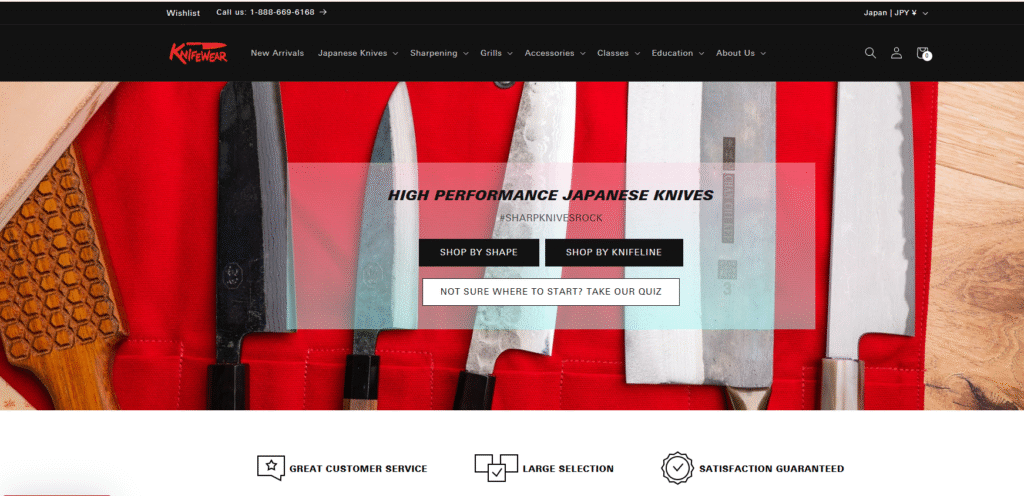
- 3. Major Online Marketplaces
- Advantages: Japanese knives can also be purchased on platforms such as Amazon Japan and Rakuten Global Market. Purchases are convenient, and reviews can be referenced.
- Points to Note: Since there are many sellers, it is important to identify trustworthy sellers. To avoid counterfeit or low-quality products, carefully check the seller’s ratings, product descriptions, and reviews. If possible, we recommend purchasing from official websites or specialty shops.
Tips for purchasing
- Shipping and customs duties: When purchasing from overseas, shipping and import duties may apply. Be sure to check in advance.
- Return and Exchange Policy: It is also important to check the return and exchange policy in case of any issues.
- Distinguishing Authentic Products: Avoid products that are extremely cheap or lack detailed information. High-quality Japanese knives come at a reasonable price.
Regardless of where you purchase it, your “My Wabocho” will not merely be an item you buy, but a cherished partner that accompanies you on your culinary journey. Take your time to carefully select the best Japanese knife from a reliable source.
5.2 Choosing Your Wabocho: Factors like Steel Type, Bevel & Purpose
Choosing the perfect Japanese knife from the vast array available can feel like navigating a maze. However, by considering a few key factors, you can find a Japanese knife that perfectly suits your cooking style and needs. Here, we explain the main points to consider when choosing a knife.
1. Material Choice: Warmth or Durability?
- Wooden Handles (Common in Wa-handles):
- Ho Wood: The most common material, popular among professionals. It is lightweight, easy to work with, and resistant to water. As it is used, it absorbs the oils from your hands, developing a unique warmth and texture that feels comfortable in your hand. This material is also often used by sharpeners when replacing handles.
- Ebony, Rosewood, etc.: Hardwoods used in high-end Japanese knives. They are highly durable and feature beautiful, unique grain patterns and luster. Their weight affects the overall balance of the knife.
- Advantages: Comfortable to hold, warm, and traditionally beautiful.
- Disadvantages: If moisture remains, it can cause mold or cracks, so regular drying is necessary.
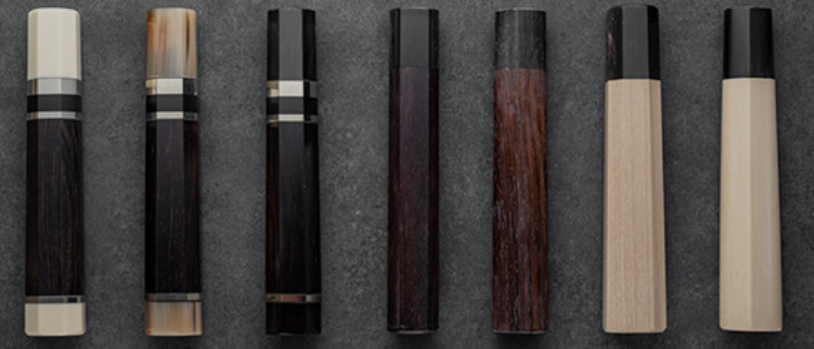
- Laminated Reinforced Wood (Pakkawood):
- A material made by impregnating thin wooden sheets with resin and then compressing and hardening them.
- Advantages: Retains the natural feel of wood while being highly water-resistant and durable. It is also less prone to cracking or warping.
- Synthetic Resin:
- Advantages: Lightweight, hygienic, highly water-resistant, and easy to maintain. Available in a variety of colors and designs.
- Disadvantages: May lack the warmth and tactile feel of wood.
- Stainless Steel (Stainless Steel):
- Advantages: Extremely hygienic and highly durable. Modern and stylish appearance.
- Disadvantages: May feel cold in winter and may become slippery when wet. Handles tend to be heavy.
2. Shape Choice: Personalizing Your Grip
The shapes of Japanese knife handles vary widely, each offering a different grip and stability.
- Octagonal:
- Features: One of the most popular Japanese-style handle shapes. The corners provide good finger grip and stability when held. The knife is less likely to rotate in the hand and easier to apply force, making it suitable for tasks that require delicate control. It is often used by professional chefs.
- Advantages: Stable grip, excellent control.
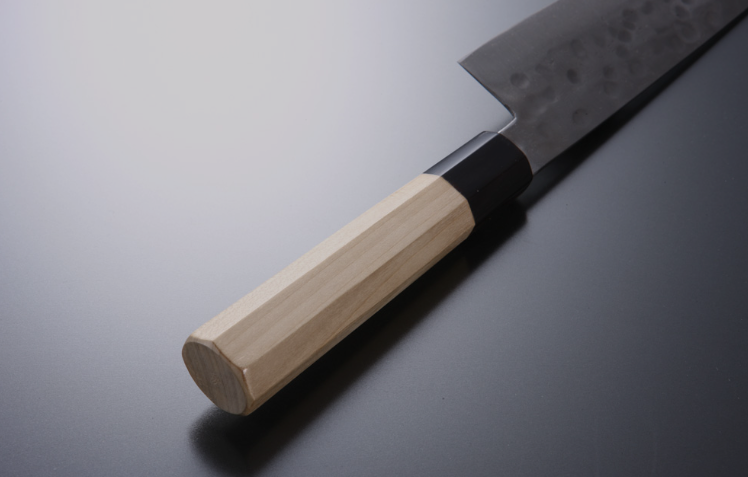
- D-shaped (Chestnut-shaped):
- Features: One side is rounded, and the other is flat, forming a D-shaped design. Primarily designed for right-handed use, it is engineered to naturally fit the thumb and index finger of the dominant hand.
- Advantages: Excellent fit and smooth power transfer.
- Note: Left-handed versions must be selected separately.
- Round:
- Features: Entirely round in shape.
- Advantages: Can be held in a variety of ways, allowing for relatively free handling.
- Disadvantages: Some people may find it slippery in the hand compared to octagonal or D-shaped handles.
- Oval:
- Features: A shape between round and D-shaped, with a gentle curve that fits comfortably in the hand.
- Western Handle Shapes:
- Generally streamlined, with indentations for the fingers or a rounded overall shape. Designed to fit comfortably in the palm of the hand.
Important advice when purchasing
- Be sure to hold it in your hand: If possible, visit a store and try holding knives of various shapes and materials. It is most important to feel the center of gravity of the knife and check whether it fits comfortably in your hand.
- Try a simulated cutting motion: Even if you don’t have any food, try holding the knife and moving it as if you were cutting something. At that time, check to see if there is any unnatural strain on your wrist or fingers.
The Importance of Balance: The Chef’s “Feel”
The “balance” of a knife refers to where the center of gravity is when you hold it. The position of this center of gravity greatly affects the ease of use of the knife, especially in terms of fatigue during long periods of use.
- Ideal balance for Japanese knives:
- Many traditional Japanese knives have thin blades and light handles, so the center of gravity is located near the base of the blade (around where the blade meets the handle).
- This balance allows for smooth “pull cuts” and “push cuts” by utilizing the weight of the blade. It gives the sensation of the blade being drawn into the food with minimal effort.
- It is said to reduce strain on the wrist and arm even during prolonged use.
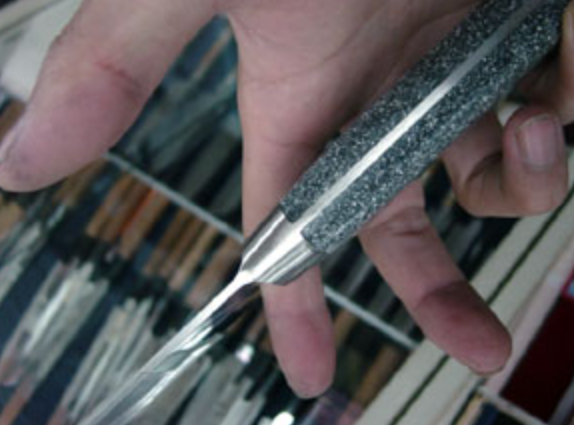
- How to check the balance:
- Gently grip the knife and lift it up. Check if it feels unnaturally heavy or tilts in a specific direction.
- Ideally, the center of gravity of the knife should be around the base of the index finger (where the index finger is positioned when holding the knife).
- If the center of gravity is too close to the blade tip, it can strain the wrist and make control difficult. Conversely, if the center of gravity is too close to the handle, the weight of the blade cannot be utilized, and additional force may be required when cutting ingredients.
The “perfect balance” for you
The balance of a knife is greatly influenced by personal preferences and cutting habits. What is the perfect balance for one person may not be so for another. Therefore, it is most important to **”check it with your own hands”**.
The material and shape of the handle, as well as the overall balance of the knife, are the keys to turning your Japanese knife into more than just a tool—they make it a **”partner” that maximizes your culinary skills and passion.”** By focusing on these elements and taking the time to find the perfect knife for you, you will take the first step toward building a long and fulfilling relationship with your Japanese knife.
5.4 Investing in Quality: Understanding Wabocho Price Ranges & Value
Japanese knives range in price from a few thousand yen for affordable models to hundreds of thousands of yen, and sometimes even over a million yen for works of art. When purchasing a Japanese knife for the first time, it can be difficult to understand what this price difference means and where to “invest” your money. In this section, we will take an in-depth look at the factors that determine the price of Japanese knives and the “value” that comes with that price.
Main Factors Determining Price
The price of Japanese knives is mainly determined by the following factors.
- 1. Type and Quality of Steel:
- High-quality carbon steel (e.g., Aogami Super, Shirogami No. 1): These are very expensive. These steels offer excellent sharpness and edge retention, but they are costly due to high raw material costs and difficult processing.
- High-performance stainless steel (e.g., powdered high-speed steel, VG10): More expensive than general stainless steel, but easier to maintain than carbon steel, making it popular among both professionals and home users.
- General stainless steel: Widely used in affordable Japanese knives. Sufficient for daily use, but may fall short of high-end steels in terms of cutting performance durability and ease of sharpening.
- Composite materials (e.g., Damascus steel): These are more expensive than standard steel due to the labor-intensive process required to create their beautiful patterns.
- 2. Manufacturing method: Hand-forged vs. mass-produced:
- Traditional hand-forged: Knives made by craftsmen heating, hammering, and forging each piece of steel by hand are time-consuming and labor-intensive, resulting in higher prices. However, this process creates a dense steel structure, yielding the best sharpness and durability. This is the value of a “one-of-a-kind” product that embodies the skill and soul of the craftsman.
- Semi-Mechanized/Mass-Produced: Knives manufactured efficiently using machinery are more affordable than hand-forged knives. They offer consistent quality and are often sufficient for household use.
- 3. Craftsman’s Skill and Brand Name:
- Works by skilled craftsmen: Knives made by skilled craftsmen with years of experience and refined senses reflect their technical expertise in the price. Their knives are not just tools but also have artistic value.
- Well-known brands: Knives from established brands with a long history or manufacturers highly regarded domestically and internationally tend to have higher prices due to their brand value.
- Unknown Artisans/Emerging Brands: Knives made by unknown artisans with exceptional skills or emerging brands may offer high-quality options at relatively affordable prices.
- 4. Level of Sharpening and Finishing:
- Final Sharpening: The sharpness of a knife is greatly influenced by the quality of the final sharpening. Knives sharpened by professional sharpeners through multiple manual processes have unparalleled sharpness compared to factory-sharpened knives, and the labor involved is reflected in the price.
- Surface Finish: The surface finish, such as mirror finish, kasumi finish, or black finish, also affects the price.
- 5. Handle Material:
- Handles made from common woods like magnolia are relatively affordable, but handles made from premium woods like ebony or rosewood, or special synthetic materials, are themselves quite expensive.
Wabocho Price Ranges and Their Value
- 1. Entry-Level (Up to ¥15,000):
- Features: Mostly made of stainless steel, these are mass-produced double-edged utility knives and chef’s knives. The handles are typically made of wood or synthetic resin.
- Value: They offer sufficient performance for everyday use at home and are relatively easy to maintain. They are ideal for those who want to experience the sharpness of Japanese knives for the first time. They are available at many online stores and mass retailers.
- Recommended for: Beginners to Japanese knives, those who want to try out good sharpness at an affordable price, and those on a budget.
- 2. Mid-Range (¥15,000 – ¥50,000):
- Features: More models use high-performance stainless steel (such as VG10) or entry-level carbon steel (such as Shirogami No. 2). Some incorporate hand-forged elements or feature more meticulous finishing. In addition to double-edged chef’s knives and santoku knives, entry-level models of single-edged deba knives and yanagiba knives are also available.
- Value: Offers a good balance of sharpness and durability, making it a cost-effective option for those looking to elevate the quality of their cooking. With proper maintenance, it can be used for many years.
- Recommended for: Those who have begun to take an interest in cooking, those seeking to experience the sharpness of more authentic Japanese knives, and students aspiring to become professionals.
- 3. High-End (¥50,000 – ¥150,000):
- Features: Made from the highest quality carbon steel (Aogami Super, Shirogami No. 1) or the top-of-the-line powdered high-speed steel. Crafted by skilled artisans through traditional hand-forging and meticulous hand-polishing. Many of these knives are single-edged specialty knives, and the handles tend to be made of high-quality wood.
- Value: The unparalleled sharpness, excellent edge retention, and the feeling of the knife becoming more comfortable to use over time make these knives truly “lifetime” tools. They combine the performance of a tool with the beauty of a work of art.
- Recommended for: Professional chefs, enthusiastic hobbyists who enjoy cooking, and those who want to invest in the best tools.
- 4. Ultra High-End (Above ¥150,000):
- Features: These knives are made from extremely rare steel, crafted entirely by hand by master artisans, and feature artistic engravings and decorations. Custom-made knives also fall into this price range.
- Value: In addition to their practicality, these knives also hold value as collectibles and family heirlooms. They are truly “works of art” among Japanese knives.
- Recommended for: Knife collectors, top chefs seeking the ultimate tools, and those looking for a special gift.
Wabocho as an “Investment”
Japanese knives are not simply “things” that are consumed, but rather “tools for life” that can be used for decades with proper care, and in a sense, they can be considered an “investment.”
- Long-term cost performance: Even expensive knives can offer higher cost performance than inexpensive knives that need to be replaced frequently, if they are properly maintained and used for a long time.
- Improved cooking quality: A good knife undoubtedly enhances the quality of your cooking. It maximizes the potential of ingredients, making dishes more delicious and visually appealing. This is an “investment” that enhances satisfaction in the cooking process and enriches the dining experience.
- The joy of loving your tools: The joy of owning, maintaining, and using a high-quality Japanese knife is immeasurable. It will further deepen your passion for the act of cooking.
When choosing your first Japanese knife, there is no need to force yourself to choose an expensive one. Consider your current cooking level, frequency of use, willingness to maintain it, and budget, and choose the one that offers the “best value for you right now.” By using and maintaining that knife with care, you will truly appreciate the value of a Japanese knife and your culinary journey will become even more fulfilling.
Conclusion: Your Journey to Wabocho Mastery Begins Here
Through this “First Japanese Knife” guide, you have gained all the necessary information for selecting a Japanese knife. From technical elements such as where to purchase, steel type, blade sharpening, and intended use, to sensory elements like the grip feel of the handle and overall balance, as well as price range and value, you have learned how to choose a Japanese knife from multiple perspectives.
A Japanese knife is not merely a kitchen tool. It is the embodiment of Japan’s traditional sword-making heritage, the exceptional craftsmanship of its artisans, and a deep reverence for ingredients—it is truly the “soul of the chef.” A Japanese knife that fits comfortably in your hand is not just a tool for cutting ingredients; it will become a “partner” that ignites your passion for cooking and deepens your understanding of Japanese culinary culture.
Choose wisely, care for it properly, and above all, enjoy the process of using it. The culinary journey you embark on with a Japanese knife will undoubtedly enrich your life and make it more flavorful.
Now, experience the “magic of sharpness” that a Japanese knife brings to your kitchen and open up new horizons in cooking.

